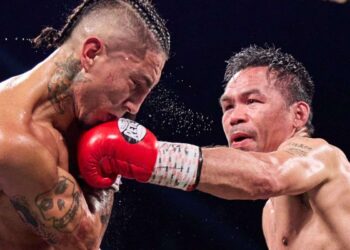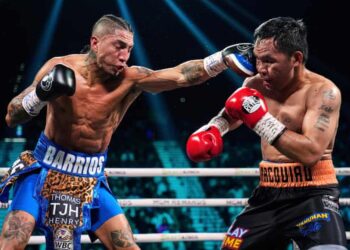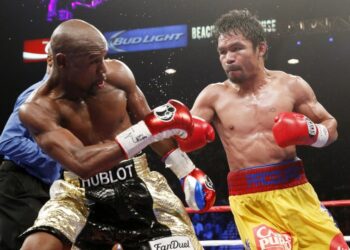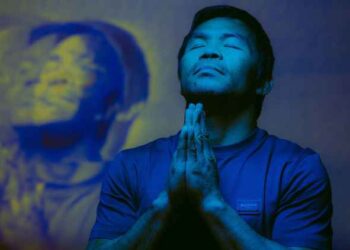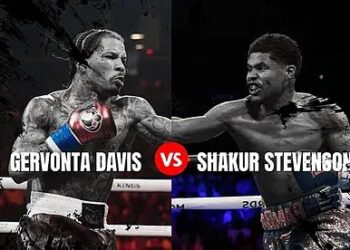Manny Pacquiao’s legendary status as one of boxing’s greatest ever prizefighters has once again been reinforced — this time not just in the ring, but in the bank account. The Filipino icon’s much-publicized comeback fight against Mario Barrios has proven to be a lucrative venture, with reports suggesting that Pacquiao pocketed a substantial payday that cements his standing as one of the sport’s most bankable stars, even at the age of 46.
For many boxing fans, Pacquiao’s return to the ring after nearly three years in retirement was already a spectacle worth paying for. But for Pacquiao, it was more than just an exhibition of skill and legacy; it was a business move executed with the same precision as his legendary left hook. According to insiders, Pacquiao’s guaranteed purse for the Barrios fight alone was upwards of $10 million, with additional revenue coming from pay-per-view shares, sponsorship deals, and gate receipts. All told, estimates place his total earnings for this single fight at close to $25 million — an impressive sum for a fighter long past the traditional prime age in a brutal sport like boxing.
Pacquiao’s opponent, Mario Barrios, himself no stranger to high-profile bouts, was seen as a credible threat to the aging legend. The fight generated huge buzz because Barrios is younger, taller, and naturally bigger than Pacquiao, who had to come back down to welterweight condition after years away. The narrative was set: could the living legend still keep up with a hungry, in-form opponent? The answer came in dramatic fashion as Pacquiao, despite showing signs of ring rust, delivered flashes of his vintage speed and relentless combinations to edge out Barrios in a close, entertaining contest that went the distance.
The commercial success of the fight should not come as a surprise to anyone familiar with Pacquiao’s enduring appeal. Across Asia, particularly in the Philippines, Pacquiao remains a cultural phenomenon, transcending the sport with his rags-to-riches story and his political clout back home. Pay-per-view buys in the U.S. and abroad reflected this loyal global following. Reports suggest the fight generated over 800,000 PPV sales, an astonishing figure for a non-title bout featuring a retired fighter returning for what might well be his final curtain call.
Pacquiao’s financial windfall also underscores a crucial truth about the business of boxing: big names will always draw big money. Even as new stars emerge, promoters know that a proven draw like Pacquiao guarantees ticket sales, global media attention, and major sponsorships. Major brands lined up to attach themselves to Pacquiao’s return. From energy drinks and telecom giants to apparel brands, the eight-division world champion once again proved his value as a walking billboard for advertisers eager to tap into his massive fanbase.
In the Philippines, the fight was treated like a national holiday. Streets emptied as families gathered around televisions and projectors, just as they did during Pacquiao’s prime years. For many, this bout rekindled memories of his battles with the likes of Oscar De La Hoya, Miguel Cotto, Ricky Hatton, and of course, Floyd Mayweather Jr. For Pacquiao, however, it also added millions to an already remarkable fortune and reminded the world why he has remained financially relevant long after his contemporaries faded away.
It also raises questions about what’s next for the “Pacman.” Will this truly be his last dance? Or will the taste of victory and another multi-million dollar payday tempt him back into the ring yet again? His camp has been tight-lipped about future plans, but whispers of a potential farewell fight in Manila — or even a lucrative exhibition bout in Saudi Arabia or Dubai — have already begun to circulate.
Critics will argue that Pacquiao risks tarnishing his legacy by extending his career into his late forties, especially in a sport where one punch can dramatically change fortunes. But if his latest payday is any indication, the financial incentives remain as powerful as ever. For a man who rose from selling doughnuts on the streets of General Santos City to becoming one of the highest-paid athletes in the world, the pull of one last big purse is hard to resist.
Beyond the money, there is also Pacquiao’s sense of duty to his people. He has often used his fight purses to fund scholarships, housing projects, and other charitable works in the Philippines. This fight, too, is expected to benefit many back home, adding another layer of meaning to his decision to lace up the gloves once more.
In the end, Manny Pacquiao’s comeback fight against Mario Barrios was about more than just boxing. It was a reminder that legends never truly retire — not when there’s still a story to tell, a legacy to honor, and yes, millions more to earn. For Pacquiao, the ring remains both a battleground and a gold mine — and this latest payday shows he still knows exactly how to
win in both arenas.

